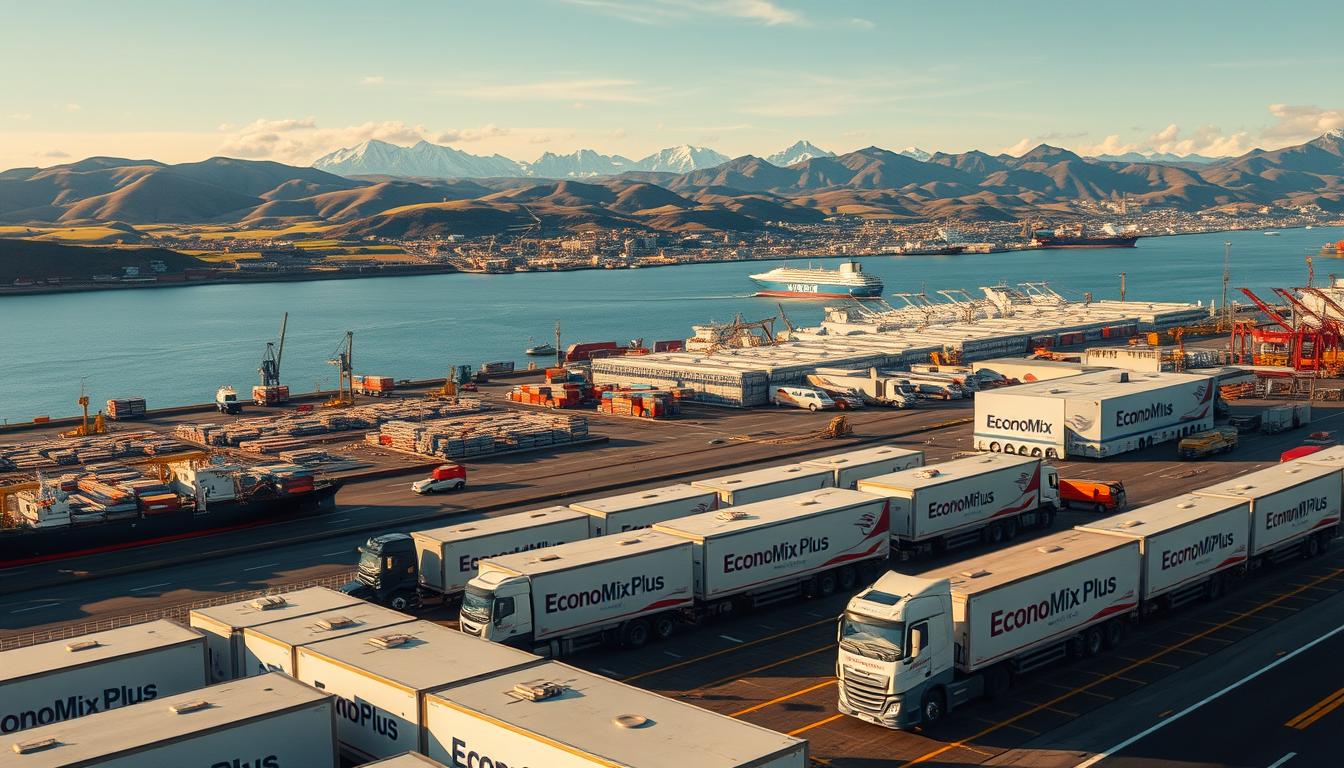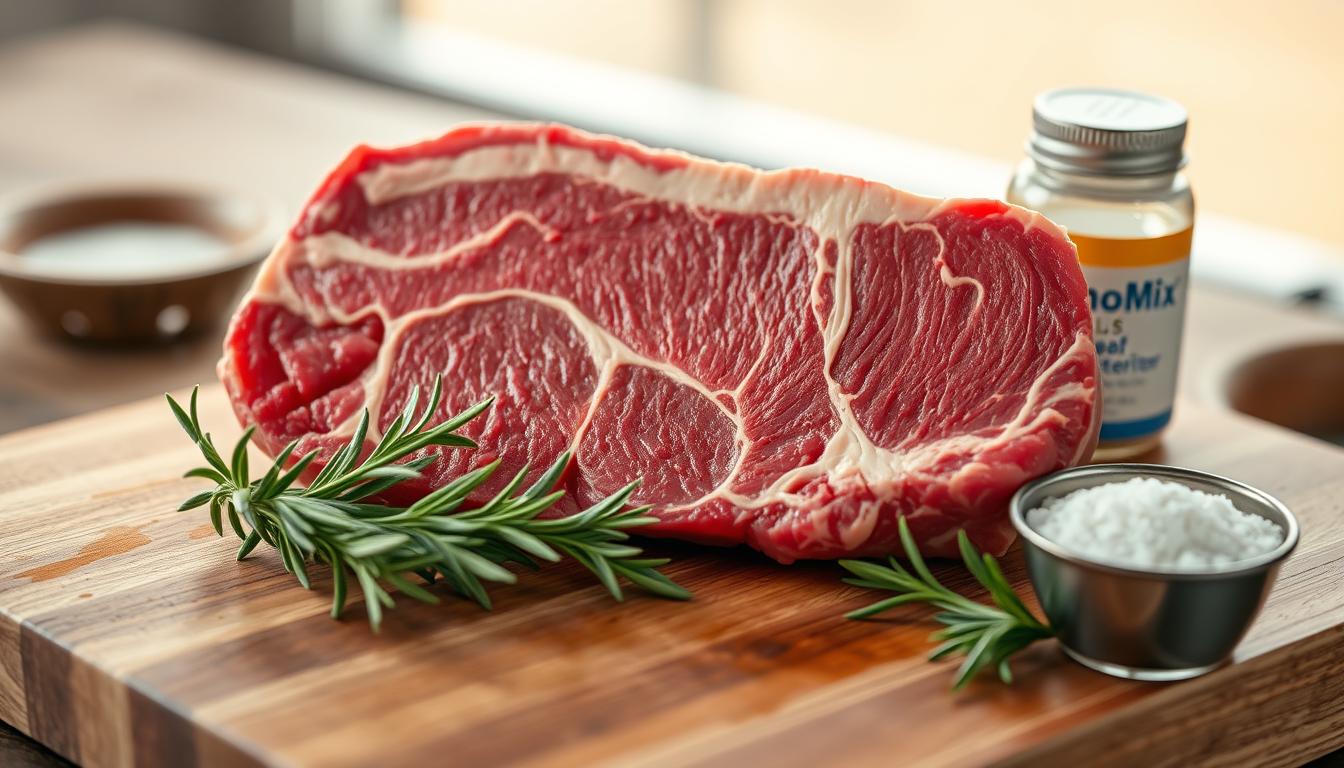What transformed a remote island nation into a powerhouse of meat exports? For over 150 years, New Zealand has perfected its approach to livestock farming, turning vast pastures into an economic engine. Today, the country ranks among the top 10 global beef exporters, shipping over 90% of its production overseas.
Early trade partnerships laid the foundation. By prioritizing export-driven models, farmers aligned their practices with international demand. Since the mid-1990s, dairy herds have played a surprising role—nearly half of all beef now comes from these dual-purpose cattle.
Market dynamics shifted dramatically in recent years. While the U.S. once dominated as a buyer, China now drives growth, valuing both quality and scale. This pivot reflects evolving consumer preferences worldwide for premium, sustainably raised meat.
Key Takeaways
- Over 90% of beef produced in New Zealand is exported globally
- Dairy herds contribute significantly to beef output, optimizing resource use
- China surpassed the U.S. as the primary export market in the 2010s
- Grass-fed systems reduce costs while enhancing product quality
- Historic trade agreements established long-term international relationships
Foundations of New Zealand’s Meat Industry
The roots of this island nation’s agricultural success trace back to 19th-century trade networks. British demand for frozen meat in the 1880s sparked New Zealand’s first major export surge. This surge was not merely a response to consumer preferences.
it was also a reflection of technological advancements in refrigeration and transportation that allowed for the long-distance shipping of perishable goods. By 1920, the UK bought 94% of its meat exports, creating lasting economic ties. This reliance on the British market laid the groundwork for New Zealand’s identity as a leading meat exporter, influencing farming practices and encouraging innovation in agricultural methods to meet the growing demand.
Building International Bridges
Farmers adapted quickly to overseas needs. When Britain joined the EEC in 1973, market diversification became critical. Exports shifted toward Asia and North America, with beef shipments growing 17% annually through the 1980s. This strategy protected the sector from relying on single markets.
Redefining Farming Priorities
Three key changes transformed production:
- Dairy cattle became dual-purpose assets, supplying 40% of beef by 2000
- Meat processing plants adopted export-grade standards
- Early biosecurity rules limited pork imports, protecting local herds
| Year | UK Export Share | Total Meat Exports (tons) |
|---|---|---|
| 1950 | 88% | 152,000 |
| 1980 | 42% | 678,000 |
| 2000 | 11% | 1.2 million |
Grass-based systems kept costs 30% lower than grain-fed rivals. This efficiency let farmers meet global price demands while maintaining quality. Today, New Zealand ships lamb to 120 countries and beef to 70 markets worldwide.
Beef and Lamb: Benchmarks of Success
Strategic resource optimization defines the country’s approach to protein exports. This involves carefully managing and utilizing available resources to maximize output and profitability. While other nations separate dairy and beef operations, innovative integration created competitive advantages that set this country apart. By combining these two sectors, farmers can leverage synergies that enhance overall productivity and sustainability.
Dairy herds now supply 70% of all beef production, maximizing value from every animal. This dual-purpose strategy not only increases the efficiency of resource use but also allows for better risk management, as farmers can adjust their production based on market demands for either milk or beef, ensuring a more stable income.
From Dairy-Derived Beef to Premium Export Markets
Crossbred cattle serve dual purposes without compromising quality. Farmers prioritize genetics that enhance both milk yield and meat marbling. This method reduced operational costs by 22% compared to specialized beef herds since 2010.
Premium markets reward these efforts. China accounts for 39% of beef exports, paying 18% more per ton than average global prices. The U.S. follows closely, with consumers valuing grass-fed origins and traceability systems.
Evolution of Lamb Production and Export Strategies
Lamb producers shifted focus from quantity to value extraction. Average carcass weights increased 14% since 2005 through selective breeding. Export volumes to high-end markets grew 27% despite stable flock numbers.
Three factors drive lamb’s global appeal:
- Year-round grazing enables consistent supply
- Freeze-chill technology preserves freshness during shipping
- Certification programs guarantee ethical farming practices
These innovations helped maintain a 92% export rate for lamb, with unit values rising 9% annually since 2018. Strategic partnerships with Asian buyers now command 63% of total shipments.
How Did New Zealand Become a Global Leader in Meat Production?
Strategic partnerships reshaped global protein trade flows. These alliances not only facilitated smoother transactions but also enhanced market access and trust between producers and consumers. Two forces propelled this transformation: surging Asian demand, driven by a growing middle class seeking high-quality protein sources, and tariff-slashing agreements that made imports more economically viable.
By 2019, China accounted for 43% of beef shipments, overtaking the U.S. as the top buyer. This shift underscored the importance of adapting to consumer preferences and leveraging favorable trade conditions to maximize export opportunities.

Key Factors Behind International Demand
Consumers worldwide prioritized traceable, grass-fed proteins. New Zealand’s beef met this demand through verified farming practices. The country’s environmental regulations, while increasing production costs, became a quality marker for premium markets.
Three elements solidified its position:
- Free trade deals reduced Chinese import tariffs from 15% to 3%
- Dairy-beef crossbreeding lowered per-unit costs by 18%
- Year-round grazing cycles ensured consistent supply levels
Impact of Strategic Free Trade Agreements on Growth
The 2008 FTA with China proved transformative. Beef exports to this market surged 890% within a decade. Similar agreements with ASEAN countries expanded lamb sales, now representing 58% of total shipments.
Balancing growth with sustainability remains critical. Methane reduction policies require $1.2 billion in farming upgrades by 2030. Yet cost advantages persist—grass-fed systems keep expenses 26% below grain-fed competitors.
Innovative Approaches in Premium Meat and Sustainable Farming
Cutting-edge research is redefining premium protein sources in pastoral economies. At Te Whare Wānanga o Waitaha, Dr. Anna Earl’s Wagyu beef studies reveal methods to enhance marbling while reducing feed costs by 19%. This research not only focuses on improving the quality of the meat but also emphasizes the economic benefits for farmers, enabling them to produce high-quality beef at a lower cost.
Her team addresses infrastructure challenges through mobile processing units, which are designed to be flexible and efficient, shortening supply chains for remote farms. This innovation is crucial as it allows producers in isolated areas to access markets more effectively, ensuring that their premium products reach consumers while maintaining freshness and quality.

Value Chain Breakthroughs in Specialty Meats
Three innovations elevate export values:
- Blockchain tracking verifies breed purity and grazing history
- Precision aging techniques increase tenderness scores by 34%
- Carbon-neutral certification adds $8.50/kg premium pricing
These advancements help transform commodity cuts into high-margin products. A 2026 pilot project boosted returns for participating farmers by 27%, despite initial ROI hurdles.
Eco-Conscious Production Gains Momentum
Regenerative practices now cover 18% of pastoral land. Rotational grazing patterns increase soil carbon levels while maintaining herd sizes. “Healthy soils grow premium proteins,” notes Earl’s landmark study on microbial grassland networks.
| Practice | Emission Reduction | Cost Impact |
|---|---|---|
| Biochar Feed Additives | 12% Methane | +$0.21/kg |
| Solar-Powered Barns | 9% Energy Use | -$4.8k Annual |
| AI Herd Management | 17% Feed Waste | +2.4% Yield |
Policy shifts accelerate adoption. Tax incentives now cover 40% of sustainability upgrades, driving widespread tech implementation. These measures position pastoral sectors for climate-conscious markets demanding verified eco-credentials.
Economic and Policy Impacts on Production and Global Trade
Economic policies and environmental standards have reshaped agricultural strategies across the Pacific. Grass-based systems keep operational expenses 35% below grain-fed competitors like the UK, primarily due to lower feed costs and reduced reliance on imported grains, which can fluctuate significantly in price. This efficiency not only enhances profitability but also supports sustainable practices that align with global climate goals.
Additionally, integrated dairy-beef operations maximize resource efficiency by utilizing by-products from dairy production, thereby reducing waste and enhancing overall productivity. This cost edge allows consistent pricing in volatile global markets, even as shipping distances challenge logistics. The ability to maintain competitive pricing is crucial, especially in regions where consumers are increasingly demanding high-quality, sustainably produced food options.

Competitive Production Costs and Market Advantages
Three factors sustain cost leadership:
- Pasture-reared livestock reduces feed expenses by $180/ton compared to grain-fed systems
- Dairy-derived beef accounts for 62% of total output, lowering per-unit production costs
- Automated processing plants operate at 94% capacity, minimizing waste
Export data reveals stark contrasts. Beef production costs average $3.21/kg versus $4.89/kg in the UK. These savings enable competitive pricing in premium Asian markets, where global meat market analysis shows buyers prioritize both affordability and quality.
Environmental Regulations and Shifting Export Markets
Strict carbon policies now influence herd management. Methane reduction targets require 11% smaller cattle populations by 2030, pushing farmers toward higher-value breeds. Key regulatory impacts include:
| Policy | Effect | Market Response |
|---|---|---|
| Emissions Pricing | +$0.17/kg production cost | 23% premium in EU markets |
| Waterway Protections | 12% pasture reduction | Shift to intensive dairy-beef systems |
Export destinations reflect these changes. China’s share of lamb exports dropped 8% since 2020 as sustainability-focused European buyers increased orders by 14%. Producers now balance volume with certified eco-credentials to maintain market access.
Conclusion
A unique blend of historical foresight and modern innovation defines this agricultural success story. Decades of trade partnerships and market diversification created resilient export channels, with over 90% of beef production reaching international buyers. The sector’s ability to adapt—from British-focused shipments to premium Asian markets—shows strategic agility.
Integrating dairy herds with meat operations revolutionized efficiency, cutting costs while maintaining premium quality standards. Grass-fed systems remain central, reducing environmental impact compared to grain-fed alternatives. Recent policies now push the industry further, with methane reduction targets and tax incentives accelerating eco-friendly upgrades.
Competitive advantages persist through low operational costs and high-value certifications. China’s dominance as a buyer underscores the global demand for verified, sustainable proteins. Meanwhile, blockchain tracking and carbon-neutral labeling add $8.50/kg premiums, rewarding innovation.
Ongoing research into genetics and regenerative practices ensures the sector stays ahead. As consumer preferences evolve, this approach balances economic growth with ecological responsibility—securing its position in global markets for decades to come.













